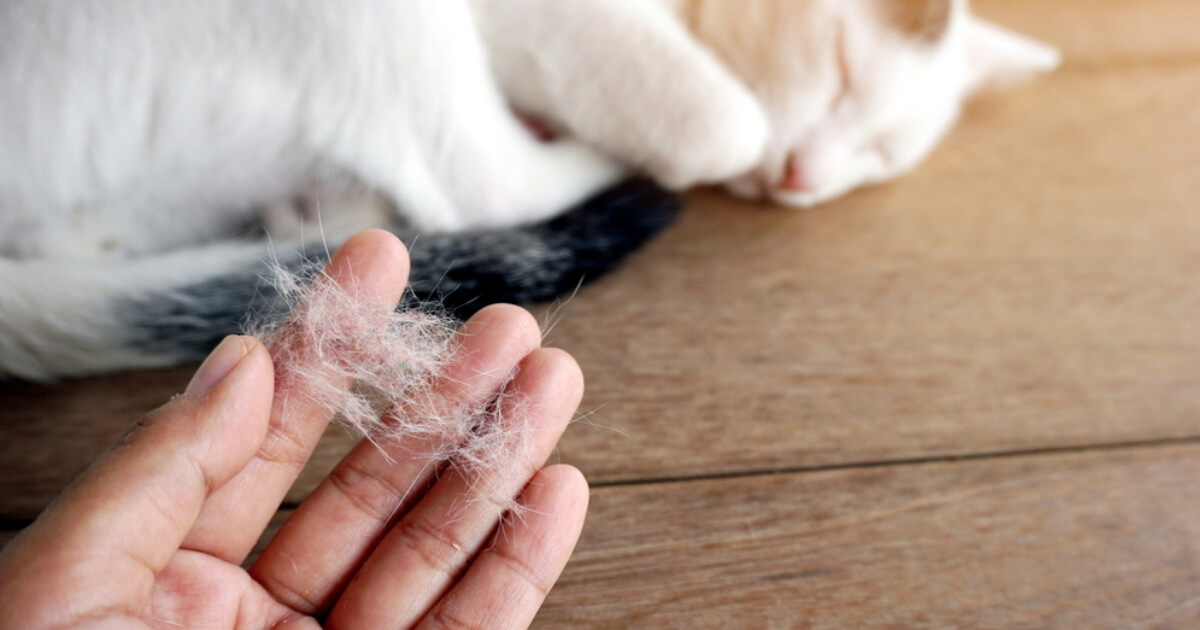Table Of Content

Emotional and behavioral issues such as stress and depression can also trigger psychogenic alopecia. The first step in treatment is finding out the underlying cause of the hair loss. If you notice your cat is losing hair, take your cat to your veterinarian for an exam. The sooner the cause is diagnosed, the sooner the cat can be feeling better and growing back their coats. Psychogenic alopecia is a compulsive disorder that drives a cat to groom itself obsessively.
Demodectic Mange
To help provide the best answer possible, please include your cat's medical history such as age, breed, medications, skin condition, location your cat is losing hair and any changes in behavior. Please include a picture if you can.We will do our best to answer questions quickly (it depends on how many we receive each day). If you need an immediate response we suggest using this online cat veterinary answer service that is available 24 hours a day.

Reasons For Hair Loss in Cats
The information presented here is not meant to replace professional veterinary diagnosis and treatment. If your cat displays any symptoms of hair loss, ask your vet to examine your pet to get a proper diagnosis and treatment plan. Remember, your cat's fur protects its skin, so fur loss can become a serious problem if left untreated. Use a preventative treatment that protects against all parasites, including fleas, mites, heartworms, and ticks. Be sure that any preventative you use is specifically formulated for cats, as many canine products are toxic to cats. It's also important to see your veterinarian for routine wellness exams and baseline blood work to monitor for any changes in thyroid levels or endocrine diseases.
Topical Treatments

Symptoms of skin infections in cats may include redness, swelling, sores, or scaly patches on the skin. If you suspect your cat has a skin infection, consult with your veterinarian for proper diagnosis and treatment. Hair loss in patches can be caused by a variety of factors, including allergies, parasites, skin infections, and hormonal imbalances. Sometimes we may suspect that your cat is overgrooming not because they are itchy, but because they are painful. Cats that have joint pain may overgroom one particular foot or leg, or bladder pain from cystitis may result in a bald belly. Pain is often overlooked when searching for the underlying cause of fur loss but it is very important to rule this out before proceeding with more advanced treatments and diagnostic tests.
Cat Hair Loss on Back, Legs & Near Tail
Licking is soothing for cats, and they will groom themselves for cleanliness and comfort. Overgrooming can be a sign of pain, which could be acute, like a UTI, or chronic, like arthritis. Excessive grooming along the spine may indicate that they are experiencing painful arthritis or have received a spinal injury. The frustration at being unable to reach some areas, like the spine, could lead to overgrooming or pulling the hair out in the areas closest to it. Depending on the evidence, you might be able to take steps to correct it at home, like ridding the house of fleas. New behavior can be a major indicator that something is wrong and needs to be addressed.
Remember that the tail is important to the cat in a number of ways but primarily to give it the needed balance. Therefore, losing the precious fur can make allow foreign materials infect the tail resulting to unwanted consequences in your cats. That can happen on any part of the leg, and it usually leaves your cat’s skin exposed to the environment. Hence, that part can be a good entry for pathogens entry into your cut’s body, thus making it sick.
Identifying and Treating Mange
Any other medical conditions that cause cats pain can similarly cause overgrooming. As a result, you might see your cat losing fur on its back legs, the base of its tail, or anywhere else on its body. This could be from bacterial or fungal infections, causing your cat to lose hair in the affected areas. Sometimes, infections may even be caused by your cat licking their skin until there is an open wound, which can then become infected, making hair loss even worse. It is important to have medical issues ruled out by your veterinarian. Fleas, ticks, and other parasites won’t hesitate to set up camp on your cat’s tail.
Hormonal imbalances, such as hyperthyroidism or increased levels of steroids in the body, may lead to hair loss in cats. The remaining 14% involved a combination of psychogenic alopecia and medical causes of itching and hair loss. Alopecia is the partial or complete lack of hair in areas where it is normally present. Hair loss is a sign, and its underlying cause must be determined in order to be treated.
Is Your Rabbit Sick? 9 Signs the Answer May Be 'Yes' - PETA
Is Your Rabbit Sick? 9 Signs the Answer May Be 'Yes'.
Posted: Tue, 26 Nov 2019 08:00:00 GMT [source]
If your cat sheds profusely, has slow hair growth, and unusual bald spots in the fur, she could have feline pattern baldness. Pattern baldness is a form of alopecia, a lack of hair follicles in an area of the body where hair was previously present. A cat will sometimes lose hair in the genital region, the underside of the tail, on the inside of the hind legs and on the underbelly.
Some unusual cases may need additional testing like a skin biopsy or may be referred to a specialist veterinary dermatologist. It is important to note that just because you don’t see signs of itchiness, that doesn’t mean your cat is not itchy. Often, cats hide those behaviors, only to gnaw and scratch when they are hidden from view. Urinary tract disorders are pretty common in cats, and you’ll likely know if your kitty has contracted one.
It is common to see a cat who’s in a stressful situation suddenly begin to groom. Diseases that can inhibit or slow hair follicle growth include nutritional deficiencies (particularly protein deficiencies) or hormonal imbalances. Significant hair loss is common in cats after respiratory infections.
Over time, this displacement behavior can become independent of the initial stressor and eventually become compulsive in nature. The hair loss occurs only in places that can be reached by the cat’s tongue; secondary skin changes, such as redness or bumps, are rarely evident. If your cat appears to be healthy otherwise, it’s possible that over-grooming to reduce stress — also known as displacement grooming — might be what’s behind the bald patches. Displacement grooming can lower a cat’s stress level, helping to calm the cat and deflect aggression from other individuals.

No comments:
Post a Comment